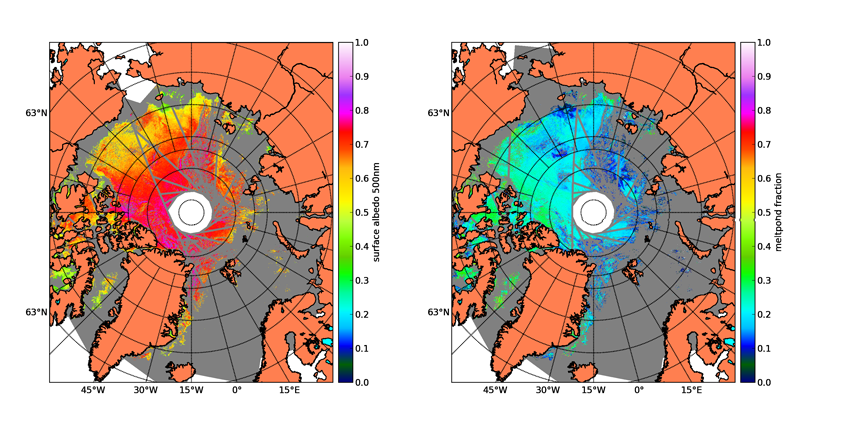Sea ice albedo
Sea ice albedo from optical sensors
Active melting of snow and ice is observed in Arctic in the summer months. This melting produces the melt ponds of different depths on top of the sea ice. Melt ponds drastically reduce the ice albedo, changing the radiative balance in Arctic. Monitoring the processes of melting, formation of melt ponds and subsequent freezing of melt ponds is an important component of the Arctic climate system. Data products like surface albedo (Figure 1, left) and melt pond fraction (Figure 1, right) have been developed from MERIS specrometer data and later from MODIS data.

Figure 1:
Surface albedo (left) and melt pond fraction (right) from satellite specrometer data on 12 July 2011. The grey lines show where different swath data from the same day are merged into a Pan-Arctic mosaic.
© Institute of Environmental Physics, University of Bremen and Institute of Physics National Academy of Sciences of Belarus
